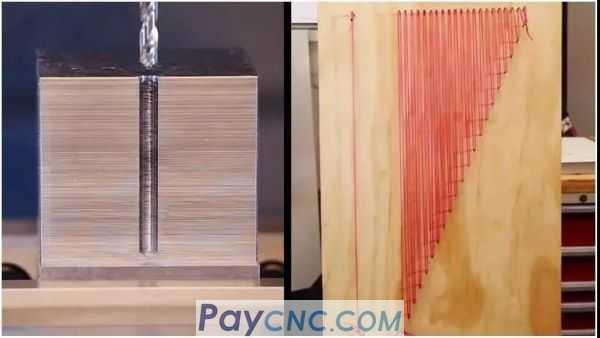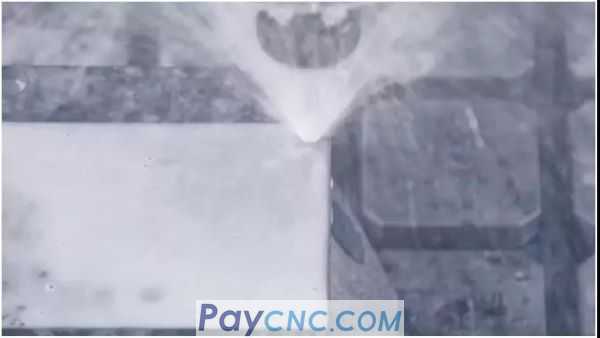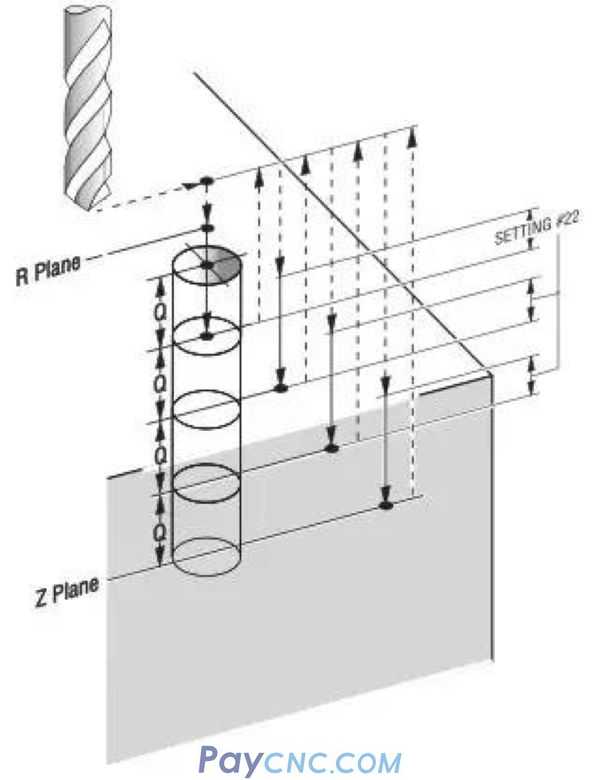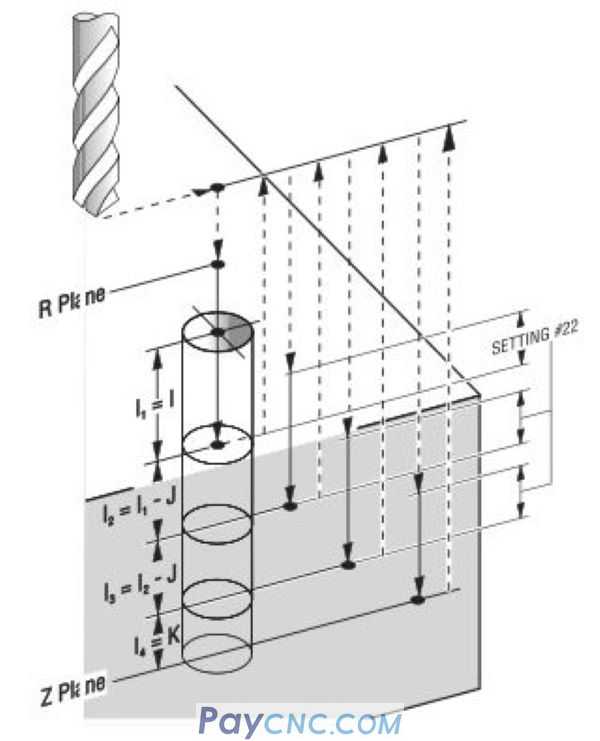In the choice of drilling cycle, we usually have three options:
1. G73 (chip breaking cycle)
Usually used for processing the hole depth more than 3 times the diameter of the drill, but not exceeding the effective blade length of the drill
2. G81 (Shallow hole circulation)
Usually used for drilling center holes, chamfering and processing holes not exceeding 3 times the diameter of the drill
With the advent of internal cooling tools, in order to improve processing efficiency, this cycle is also selected for drilling
3. G83 (deep hole circulation)
Usually used for processing deep holes

The machine is equipped with spindle center cooling (water outlet)
The tool also supports center cooling (water outlet)
Choosing to machine holes with G81 is the best choice
The high-pressure coolant will not only take away the heat generated during drilling, but also lubricate the cutting edge more timely. The high pressure will also directly break the drilling chips, so the small chips generated will be discharged out of the hole in time with the high-pressure water flow. It avoids the tool wear caused by secondary cutting and the deterioration of the quality of the machined holes. Since there is no problem of cooling, lubrication and chip removal, it is the safest and most efficient solution among the three drilling cycles.

The processing material is difficult to break but other working conditions are good
When there is no spindle center cooling (water outlet)
G73 is a good choice
This cycle will achieve chip breaking through a short pause time or a small distance of retreat. However, the drill bit needs to have a good chip removal ability. A smoother chip removal groove will allow the chips to be discharged faster, avoiding the impact of the next drilling. The chip removal is entangled, thereby destroying the quality of the hole, and using compressed air as an auxiliary chip removal is also a good choice.
If the working condition is unstable
Using G83 is the safest choice
Deep hole processing will cause the cutting edge of the drill bit to be unable to cool in time, lubricate and wear too quickly, and the chips in the hole will also be difficult to discharge in time due to the depth. Add WeChat: Yuki7557 to send a macro program tutorial. If the chip flute The chips inside block the coolant, which will not only greatly reduce the life of the tool, but also make the inner wall of the machined hole rougher due to secondary cutting, which will further cause a vicious circle.
If the tool is raised to the reference height-R every time a small distance is drilled -Q, it may be more suitable for machining close to the bottom of the hole, but it will take a lot of time to machine the first half of the hole, which causes Unnecessary waste.
Is there a more optimized method?
Here are two ways of G83 deep hole circulation
1: G83 X_ Y_ Z_ R_ Q_ F_

2: G83 X_ Y_ Z_ I_ J_ K_ R_ F_

In the first method, the Q value is a constant value, which means that from the top to the bottom of the hole, the same depth is used for processing each time. Due to the needs of processing safety, the smallest value is usually selected , Which also means the least metal removal rate, invisibly also wasted a lot of processing time.
In the second method, the depth of each cut is represented by I, J, K:
When the working condition of the top of the hole is good, we can set a larger I value to improve the processing efficiency; when the working condition of the middle part of the hole is normal, we adopt a gradually reduced J value to ensure safety and efficiency; When the working condition of the bottom of the machining hole is bad, we set the K value to ensure the safety of the machining.
In actual use, the second method may increase your drilling efficiency by 50%, and the cost is zero!
|
 |
| Products Catalogue | Home | About Us | Retrofit | Download | News | Tech Support | Contact Us | |
|
|
|
